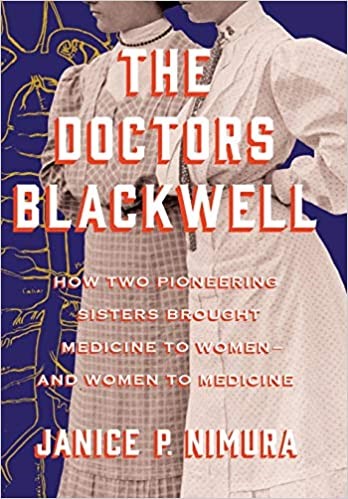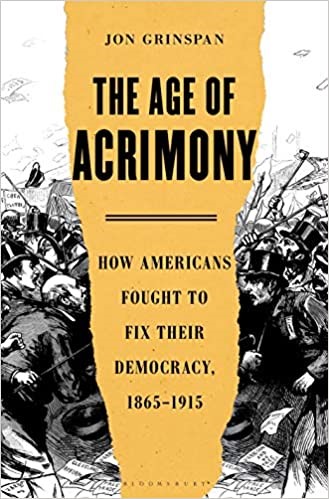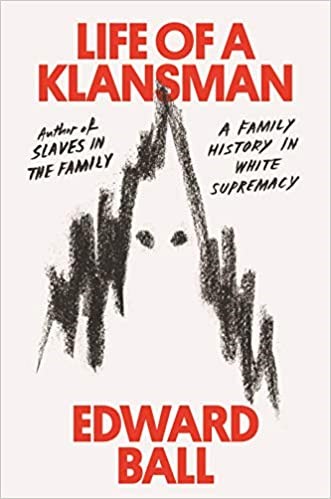
Janice P. Nimura is the author of Daughters of the Samurai: A Journey from East to West and Back Again (2015). In her latest book, The Doctors Blackwell: How Two Pioneering Sisters Brought Medicine to Women – and Women to Medicine (2021), she once again explores “the forgotten lives of border-crossing nineteenth-century women.”
In the case of the Blackwells, their “border” is that sturdy wall behind which only men were permitted to practice medicine. When speaking of mid-nineteenth century “medicine” however, one must be careful not to conflate modern practices with the barbarisms of that era. Indeed, perhaps the greatest contribution made by the doctors Elizabeth and Emily Blackwell was to observe that much of what doctors were up to often did much more harm than good.
To wit, leeches were common therapies including their internal application among women experiencing menstrual problems. And, it wasn’t until 1847 when a doctor suggested that after working with corpses in the morgue, it might be helpful to wash the hands before moving on to deliver a baby.
After struggling mightily to be accepted to medical school, the Blackwell sisters entered a world hardened by practices so ingrained into the profession, any effort to point out the sickening level of mortality and disfigurement that followed treatment would be considered heresy.
In an age when actual medical breakthroughs were decades away and the simplest understanding of germ theory was ridiculed as crackpot medicine, the Blackwells found that the slightest effort to improve doctoring was met with obstinacy. A skeptical male physician once queried, “Weren’t those lady doctors known to promote hygiene over calomel [mercury chloride] and leeches? What kind of doctoring was that?”
In 1849, Elizabeth became the first American woman to receive a medical degree. Younger sister Emily followed in her footsteps and actually became the “more brilliant physician.”
As the Blackwells were breaking down barriers in medicine, large numbers of other women were engaging in the fight for suffrage.
Interestingly, the elder Blackwell sister did not think women were prepared to vote because they were “enslaved by their own ignorance…” She went on to ask, “What good was a vote if one didn’t know how to think independently?”
Her example, then, was not so much extracting previously-denied privileges from men; it was proving her worth despite the obstacles. Hers was a model of determination and hard work; facilitated by refusing to give in to that most debilitating state of affairs for women, matrimony.
“[Elizabeth] had never believed,” Nimura writes, “that the progress of women was the responsibility of men.” Rather, individual women must challenge the restrictive norms of society to bring about real change. And in the meantime, as she said to her sister, “we must have patience with the age while we work hard to bring a juster arrangement.”

In The Age of Acrimony: How Americans Fought to Fix Their Democracy, 1865-1915 (2021), political historian Jon Grinspan suggests that many of the men who actually were permitted to vote in this era arrived at the polls with a similar dearth of independent thinking.
This is a dual biography, of sorts, told through the lens first of fiery congressman William “Pig Iron” Kelley and then through the unconventional life of his norm-busting daughter, Florence “Florie” Kelley.
Grinspan describes a flamboyant and chaotic political age that, in many respects, resembles our own. In the final third of the nineteenth century, Americans participated in the electoral process like never before… nor since. Unfortunately, their decisions were based largely upon party loyalty rather than sound governing policies. (This is the déjà’ vu part.)
Despite this obvious shortcoming, the streets and saloons of this era were alive with the spirit of democracy. Political paraphernalia became the norm as citizens adorned themselves with capes and buttons, marched in demonstrations while carrying torches, and embraced the demagoguery of their side. Propaganda flowed from newspapers unconcerned with even the slightest pretense of objectivity, fairness, or balance. Even those unable to vote participated in the raucous rallies; and candidates, for the first time, took to the campaign trail to hawk their message.
Much like today, in an age when the representatives WE select are castigated as incompetent and corrupt, Grinspan argues that the responsibility for the whole mess rests with the voters. “The real tyrant,” citing national historian Francis Parkman “is organized ignorance, led by unscrupulous craft, and marching amid the applause of fools…”
“There was bad behavior,” Grinspan adds, quoting future president James Garfield, “but it was no conspiracy. The American people themselves ‘are responsible for the character of their Congress. If that body be ignorant, reckless, and corrupt, it is because the people tolerate ignorance, recklessness, and corruption.’” (Touché…)
With all the raw politicking of that age largely devoid of substance, Grinspan sounds a bell of hope. Voters actively engaged in their democracy and, while the inevitable result was bad government, the energy and enthusiasm were ripe for political and civics education.
Instead of harnessing this democratic freight train, however, the rowdiness of late-nineteenth century campaigns gave way to a more subdued, genteel process. In essence, politics moved from the streets to the parlor and club where backroom deals were struck by brandy-snifting elites wafting in clouds of cigar smoke.
This transition from outside to in coincides with a conscientious effort to cull the flock of newly-enfranchised voters. African Americans were actively targeted throughout the country. Saloons were shut down under the guise of social reform; thus dismantling the foundational political meeting place of the laboring classes.
In a third book set in the nineteenth century, it seems only appropriate that we should check in on the South.

At first glance, the cover of Edward Ball’s The Life of a Klansman: A Family History in White Supremacy (2020) suggests a white man’s reckoning with the racial violence lurking in his family tree. What emerges, however, is a grinding testament to the tribal mentality that has shaped America’s history. It is this exposure of the influences of tribe that speaks most closely to our own time.
By recreating a biography of his grandmother’s grandfather—the family’s “our Klansman” —Ball fleshes out the manner in which white supremacy casually asserts itself into the hearts of the simplest men.
With deadpan rhetorical simplicity, Ball chillingly recounts the sickening violence that characterized southern Louisiana in the years following the Civil War. “This is a story that begins with a woman making notes and talking about family,” he writes, “and ends with a lot of people dead in a ditch.”
Ball’s Klansman is Constant Lecorgne, a petit blanc—or low white —who also happens to have been the owner of a single slave before he went off to scrum with Yankees. In that, for Ball and his ancestor, the Civil War is the tool by which one learns that violence is the natural order of things. “The war warms up,” Ball writes, “people die.”
Returning to New Orleans under Union Army occupation while former slaves roam freely, Lecorgne finds his world turned upside down. It seems only natural that he should gather with his similarly-situated fellows to see what might be done about it.
In this case, in Louisiana and throughout the South, defeated Confederates mobilized into a variety of paramilitary clubs which history now places under the broadened banner of the Ku Klux Klan.
What ensues is a morality play. The author tries vainly to come to terms with the degree to which he is part of the same tribe that participates in the violent white backlash; one with absolutely devastating consequences for Freedmen during Reconstruction.
While the images we hold of the KKK swirl around hooded nightriders such as Constant Lecorgne terrorizing former slaves, Ball lays bare the brazen moments when blacks and sympathetic whites were openly slaughtered while attempting to exercise their new political rights.
In 1866 New Orleans, some 50 were killed and 100 more injured during a political convention meant to counter the repressive Black Codes. Ball provides ample evidence to assume that Constant Lecorgne was there while the record in matters such as this is scant. “No one claimed the role of race warrior,” Ball writes, “and wrote down what they did.”
But this void in the record should not deter us from the investigation. This is what Ball has done while concluding that “[t]he absence of criminal evidence is itself a piece of evidence. It is a sign of the chokehold that whiteness has on public memory.”
I am reminded of modern attempts to dismiss the darker sides of our history by pretending that things like this never happened; or that the manner these difficult histories are presented somehow undermines the production of patriotic citizens.
This is the mountain that Edward Ball is trying to climb. “I think white folks,” he writes, “have to come to terms with our inheritance of violence. It would be good for us, good for society.” I couldn’t agree more.











